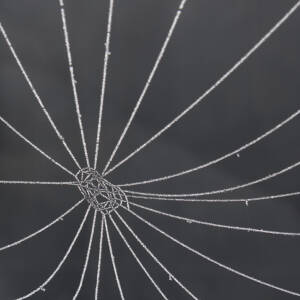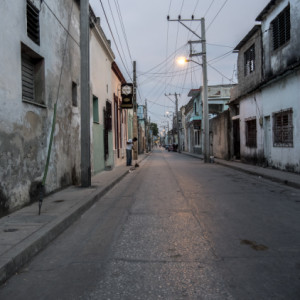Proud of our work
Now that we have stayed our compulsory first night in a hotel, we can use our convertible pesos (the higher value of Cuba’s two currencies that ensures that tourists and the better off pay higher prices) to stay in casas particulares, rooms in Cuban homes which, since 1997, Cubans have been allowed to let to tourists. From our list we picked one near the city centre and asked the hotel to phone to book it for tonight. The owner had no space left but said we could stay in his friend Ana’s house just down the street. Well, why not? Ana may not have a mention in our guide book but we know less than nothing about how this all works.
A taxi-ride later, Ana was waiting at her door for us with a huge welcoming smile and introduced us to the Cuban custom of greeting friends and strangers alike with a kiss on both cheeks. She showed us the bedroom, dominated by an alarming shiny pink bedspread scattered with matching heart-shaped cushions. Within seconds she grabbed a bin bag from a drawer with one hand, stuffed the intimidating confection into it with the other and said, laughing, ‘It’s only to make the bed look beautiful’. We exchanged smiles and I knew I’d met a kindred spirit. She gave us house keys, made us fresh mango juice and set me on the path of communicating in shamefully ungrammatical present-tense Spanish as we swapped information about families. She is the loveliest, most welcoming host.
In the debilitating heat wave we managed to walk five blocks to reach the Parque las Flores, one block from the house, where we sat to take in the strange idea that we were in Cuba, a good thirty years after I first wanted to visit. Or were we? European classical music wafted across the square to our bench under the trees near the white stone cathedral. We followed our ears to a room open to the street where an orchestra of children was playing to an astonishingly high standard. Holguin’s conservatoire of music. We were invited in to listen to their rehearsal. The racial range was striking: the conductor and solo trumpeter were Afro-Cuban, the viola player was blue-eyed blond, others had southern European features or were mixed races. But it felt as if my unnecessary attempt at identifying heritage was a European irrelevance.
We walked on. Past an art school, a library, a gallery, a sparse shop and another art gallery. In the next square was the Fondo Cubano de Bienes Culturales. We are in a civilised place.
Everywhere people were chatting through the grilles or doorways that separate their homes from the street. We repeatedly refused offers of rides in bicitaxis – a bicycle with two seats behind under a canopy and often over a loud CD player – but we saw two young men on roller blades hitching a ride behind one, with one balletic leg stretched out behind.
Back at the house we met Ana’s husband, Raciel. Equally welcoming and kind. He trained as a military pilot in Russia and Ireland but preferred my limping Spanish to his hazy English to talk about differences between Cuba and the UK: the cost of university education (free in Cuba) and dental care (free in Cuba); the rations allocated at very low cost to every Cuban (not enough to live on); homelessness (a perplexing concept).
We have landed on our feet.



Comments
Sign in or get an account to comment.


